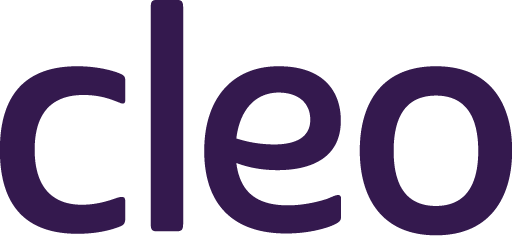We jumped into 2022 with a four-part series on the big ideas driving benefits innovation, capping it off with a live discussion with Cleo leaders Sarahjane Sacchetti, CEO; Amber Valentine-Minion, Licensed Psychologist and Clinical Lead; and Christine Michel Carter, Director of Community Engagement. View the recording now in case you couldn’t join us!
People’s relationships with work are changing, and leading employers are weathering the “Great Resignation” by undertaking a greater recalibration of how they can best support and nurture a healthy, productive workforce. Our New Year’s discussion explored themes emerging from the past two years, those changes that are here with us to stay, and the actions we can expect from winning businesses.
Caregivers are your greatest asset—and they’re waiting for you to act.
According to Cleo’s most recent national Survey of Working Parents, 91% of women manage more than half of their families’ caregiving and educational responsibilities. This added burden has already led over 3 million women to step back or away from work in 2020, and our survey found 40% of women still considering such a move, with even starker outcomes for women of color.
“Pre-pandemic we were already in this place where we were ignoring the fact that we’d failed [women in the workplace]. And in our socioeconomic world, dual-income families are not just the norm, single-parent families are becoming the norm. We just haven’t caught up and we haven’t been truth tellers… The Great Resignation is an invitation to truly rebuild. And whether you’re an HR leader, a manager, a CEO. Even if you’re budgets are small, we all can do something to destigmatize, reevaluate, and rebuild what isn’t working.”
– Sarahjane Sacchetti, Cleo CEO
This issue isn’t merely a byproduct of the pandemic and it won’t simply recede in time. We are in a new era requiring new solutions. A decade ago, there came a shift in acknowledging and destigmatizing mental health which helped bring change to the workplace. We’ve arrived at a similar inflection point for working caregivers. Employers can begin by acknowledging and centering them—including understanding that it’s not just women and moms—and really examining what their needs are. The benefits of yesterday are not going to map to today’s challenges.
“71% of our members have said they’re more confident as a parent, even during this wild time. And our moms are 60% less likely to leave their roles.”
Sarahjane Sacchetti, Cleo CEO
Flexible work is in charge and there’s no going back.
The number of U.S. workers who quit their jobs reached a new high in November 2021, when 4.5 million people resigned. Among the many factors that have led to record-breaking numbers of people quitting is a desire and need for more flexibility.
“Employees who want choice often times have a reason for that, and often times that reason is the caregiving burden that goes to those most disenfranchised, whether that’s women or people of color, in your workplace. This is a good time to affirm why flexible work works.”
– Sarahjane Sacchetti, Cleo CEO
Hybrid work is here to stay, but in order for it to truly accommodate working families, employers need to turn to new and innovative solutions to add value and to support working parents’ needs and wellbeing—flexible work requires flexible benefits.
From its initial inception, Cleo was designed to support all caregivers, not only women or mothers. In fact, nearly half of active members are non-birth parents. As employers broaden their scope of understanding around what it means to be a working caregiver, they need benefits solutions that flex to the needs of all.
“There used to be this norm or expectation that caregivers would do drop-off and then leave their caregiving hat at the door and then step into their professional role and that’s not a healthy or useful framework or expectation for anyone to have. When we’re thinking about marginalized groups, oftentimes they’re overlooked in traditional packages that are focused on ‘moms.’ It’s making sure that the benefits or the supports that are provided really focus and center on the groups that have been the most neglected historically and therefore have some of the highest needs now.”
– Amber Valentine-Minor, Licensed Psychologist and Clinical Lead at Cleo
Yesterday’s DE&I metrics don’t belong to tomorrow’s companies
“There are studies that show that Black individuals or people of color are able to really identify and notice mismatches between what a person might say and what they’re doing. If you look at a company, if your actions and your words aren’t matching what you’re actually doing, you’re actual policies, and the ways in which you’re going about creating change, people know. People are going to tell, and it’s going to affect who’s applying and who’s staying.”
– Amber Valentine-Minor, Licensed Psychologist and Clinical Lead at Cleo
Companies in the top quartile for racial and ethnic diversity are 35% more likely to have financial returns above their respective national industry medians. Those employers who continue to invest in DE&I will continue to stay ahead of the curve. There’s tremendous opportunity to go further and extend DE&I’s influence beyond the talent pipeline.
“What’s behind my attrition rate? Why aren’t women of color getting promoted? It’s often related to healthcare access, childcare access, mental health access. It’s root causes beneath the surface. It’s an invitation for DE&I practitioners to get deeper and deeper into core health benefits and core childcare benefits. What are the economic access points that we can address? I think DE&I and benefits should be the new marriage in corporate America to really make a change.”
– Sarahjane Sacchetti, Cleo CEO
